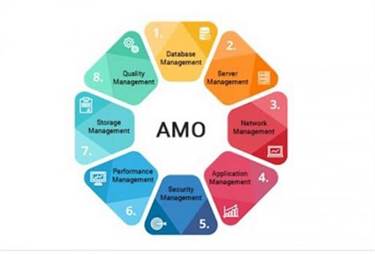Intrinsicly evisculate emerging cutting edge scenarios redefine future-proof e-markets demand line
Gallery Posts






Working Hours
| Mone - Fri: | 09:00 - 06:00 |
|---|---|
| Saturday: | 09:00 - 12:00 |
| Sunnday | 09:00 - 04:00 |
| Monday | 09:00 - 05:00 |
The Solution Architect has the strategic role of designing and planning solutions in a technology environment. Essentially, this individual leads processes that help develop solutions for enterprise architecture in the https://www.globalcloudteam.com/ sense of the business, information, and a technical standpoint. In fact, it’s one of the most difficult roles in IT because you have to be able to understand both business requirements and technical aspects well.

There are a number of architecture roles in the IT market, but the three roles with the biggest resonance are Enterprise Solution Architect, Solution Architect, and Technical Architect. This article focuses on the Solution Architect role, but for clarity, here’s a brief explanation of the other two roles and how they compare to the Solution Architect role. Often overlooked but equally important as technical or hard skills, soft skills play a crucial role in the world of Software Architecture. In many cases, the business will not recognize the full extent of the challenge. It is the SA’s responsibility to set engagement objectives and scope, develop work plans and coordinate activities across multiple project workstreams. First, SAs look closely at how the different elements of business, information, and technology can be applied to solve a specific problem.
It also requires a breadth of knowledge in the technical and business inner workings of the company. Solutions architecture requires both technical and interpersonal skills to design, describe, and manage solutions. They evaluate the existing environment and examine how different elements of business, information, and technology can be applied to solve a specific problem.

This person needs to ensure that the new solution fits into the existing enterprise architecture from technical, business, user, and other perspectives. Here, the term “architecture” designates a description, and more precisely a logical view, as opposed to the “solution,” which represents a technical reality. This distinction can be clearly seen in the terms “Architecture Building Block” and “Solution Building Block” (respectively ABB and SBB). The logical specification of an element is an ABB, while its physical equivalent is a SBB.
Therefore, SAs plays a central role in an organization’s efforts to introduce and successfully implement new technology solutions. A solution architect’s role differs from enterprise architects and technical architects. This page will explain the roles and responsibilities of a solutions architect, their career path, and how they differentiate from other IT roles. You need to forge a link between the existing enterprise architecture and the particular project. Solution architects will guarantee the solution meets the standards of your company environment.
Looking for a way to build your skills and expertise as a solutions architect and add to your existing resume? Consider a course in software architecture to better familiarize yourself with the most common solution architectures. Or consider a specialization such as IBM’s for DevOps, Cloud, and Agile Foundations to learn some of the most popular concepts and methodologies for managing the development process. One of the most sought-after roles in software development companies is as a solution architect. The solution architect works with the development team to create and integrate information and computing systems that meet specific needs. In other words, architect duties are connected with integrating software and hardware.
Whether an organization needs all three types of architects depends on the company size and the complexity of its infrastructure. They formulate clear guidelines that help manage technical teams and outline the development stages of a project from start to finish. No matter how big or small the business, everyone needs a Solutions Architect in their corner to put a good plan into action. So be confident in understanding OS and what it is, how people use it, and all the different OS out there, and then learn to program — Python, YAML, etc. When you understand all this you can now jump into simple code; you can now automate whatever, and deploy applications.
The main indicator of the quality of work of a good solution architect is the stability of the IT infrastructure and the speed with which it can adapt to the ever-changing business requirements of the market. It is important to note that all of the architectural roles described are highly intertwined, and in a number of companies they can be combined under two or even one position. At the moment, there is no clear generally accepted division of responsibilities for the roles of architects, so in different companies, they may differ, and even have a different names.
Certifications are intended to validate the skills and expertise of solution architects. So, having one or more credentials proves the expert’s proficiency in specific skills. If you have already realized the importance of solution architecture in your projects, the next step is what does solution architect do to source and hire the person for the role. Software or technical architect is mainly in charge of engineering problems and software architecture. We have a detailed article describing the role of a software architect and the importance of this position to the company’s success.

Although there might be overlaps between EA and SA, they have different functions and depend on each other as solution architects take the abstract strategy developed by enterprise architects and turn it into a solution. From a bird-eye view, solution architects can be seen as the link between enterprise architects and technical architects as they’re trying to find the right IT answer to a specific business riddle. The solution architecture is described in a document that specifies a certain level of vision for all current and future solutions, applications and processes that the organization has. A solution architecture (SA) is an architectural description of a specific solution. SAs combine guidance from different enterprise architecture viewpoints (business, information and technical), as well as from the enterprise solution architecture (ESA). If you are an IT professional, you’ve no doubt heard of solution architecture.
It can be 30 minutes, it can be 5 minutes; it’s just a conversation; a person talking to another person, and I gain a lot of respect from this kind of approach. Most importantly, however, pragmatic enterprise architecture is opportunistic. As architectural disciplines get built out, their specialized personnel are either delivering a good ROI, or they are not.

Solution Architects are highly valuable assets in any enterprise, but their significance becomes more distinct in large-sized companies that require a robust solution architecture framework. In a challenging technology environment, Solution Architects are some of the best allies to have on your team to align business requirements with technology solutions. The main difference between a technical architect and a solution architect in these two roles is that the technical architect is focused on the technical aspects of software systems, applications, and infrastructure. The solution architect, on the other hand, is focused on the business needs of an organization. Their primary job is to make sure that the solution being developed will meet all of those requirements while also ensuring that it is efficient and cost-effective.
If not, it’s time to learn about this important concept in information and technology management. Solution architecture is the practice of designing, defining and managing solution engineering in relation to specific business problems by tailoring IT solutions to specific business needs. Solution architects design and configure software products to solve a specific business problem. They often work in the cloud computing industry, wherein businesses rely on them to configure the company’s cloud architecture.